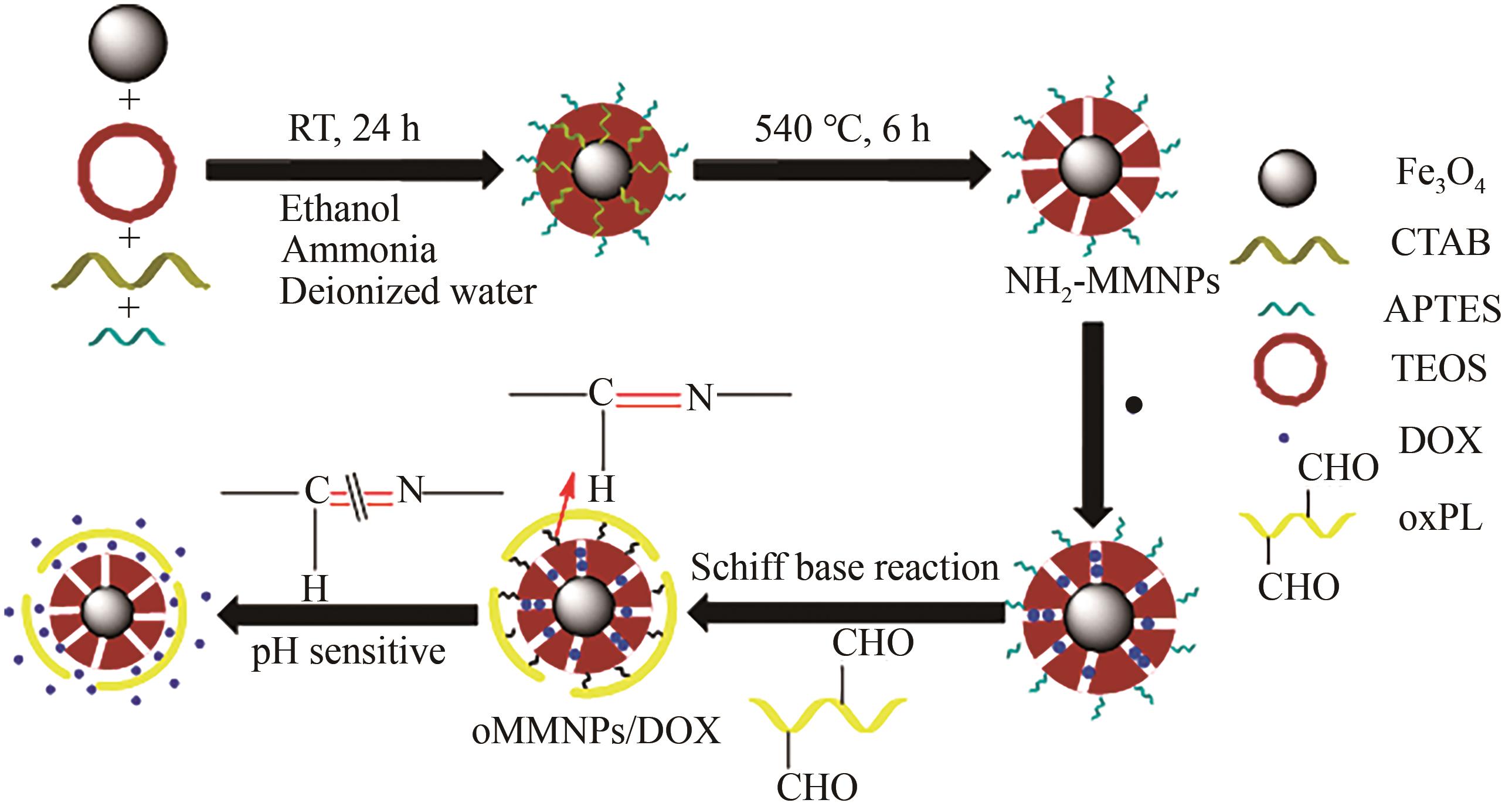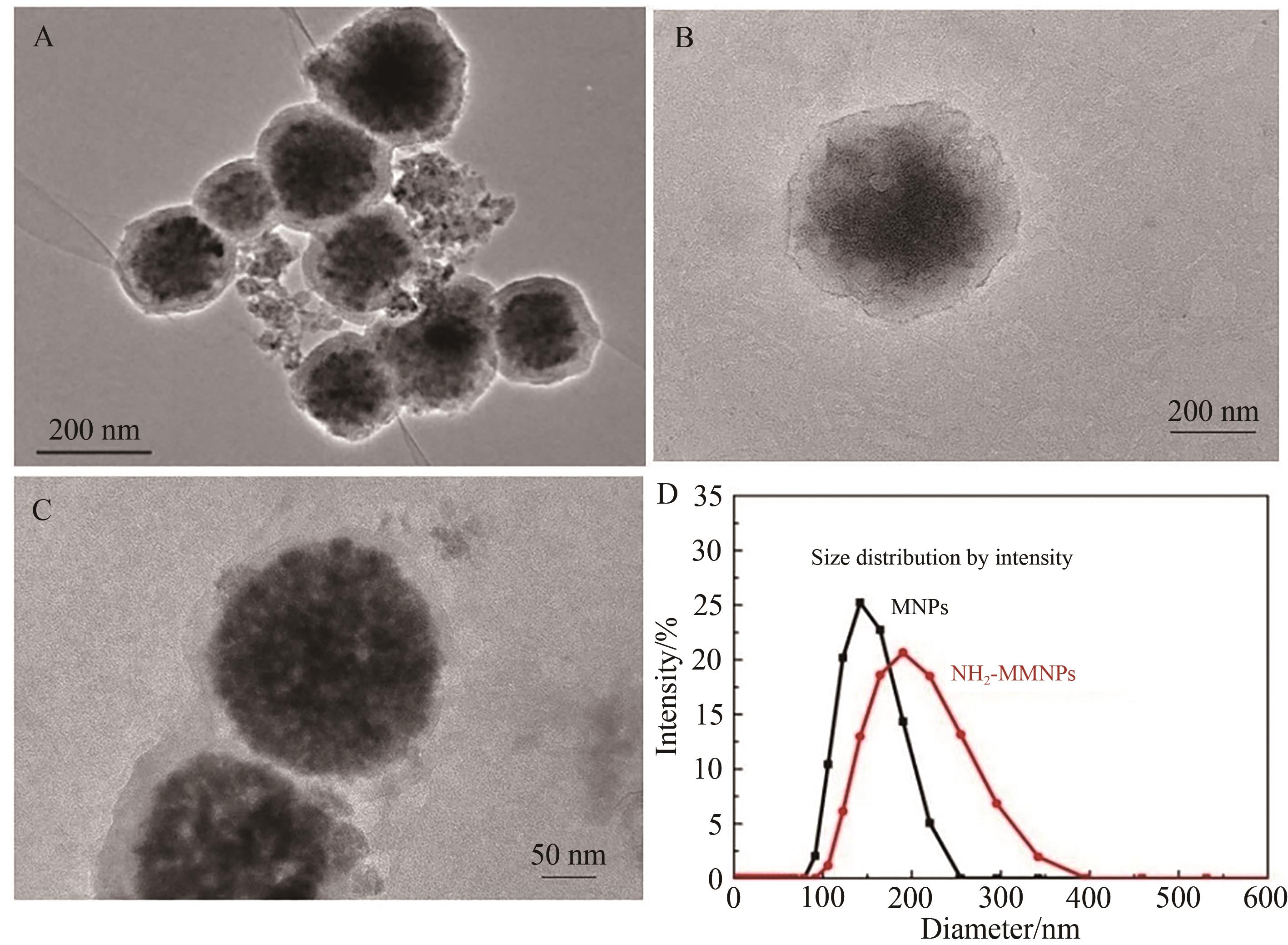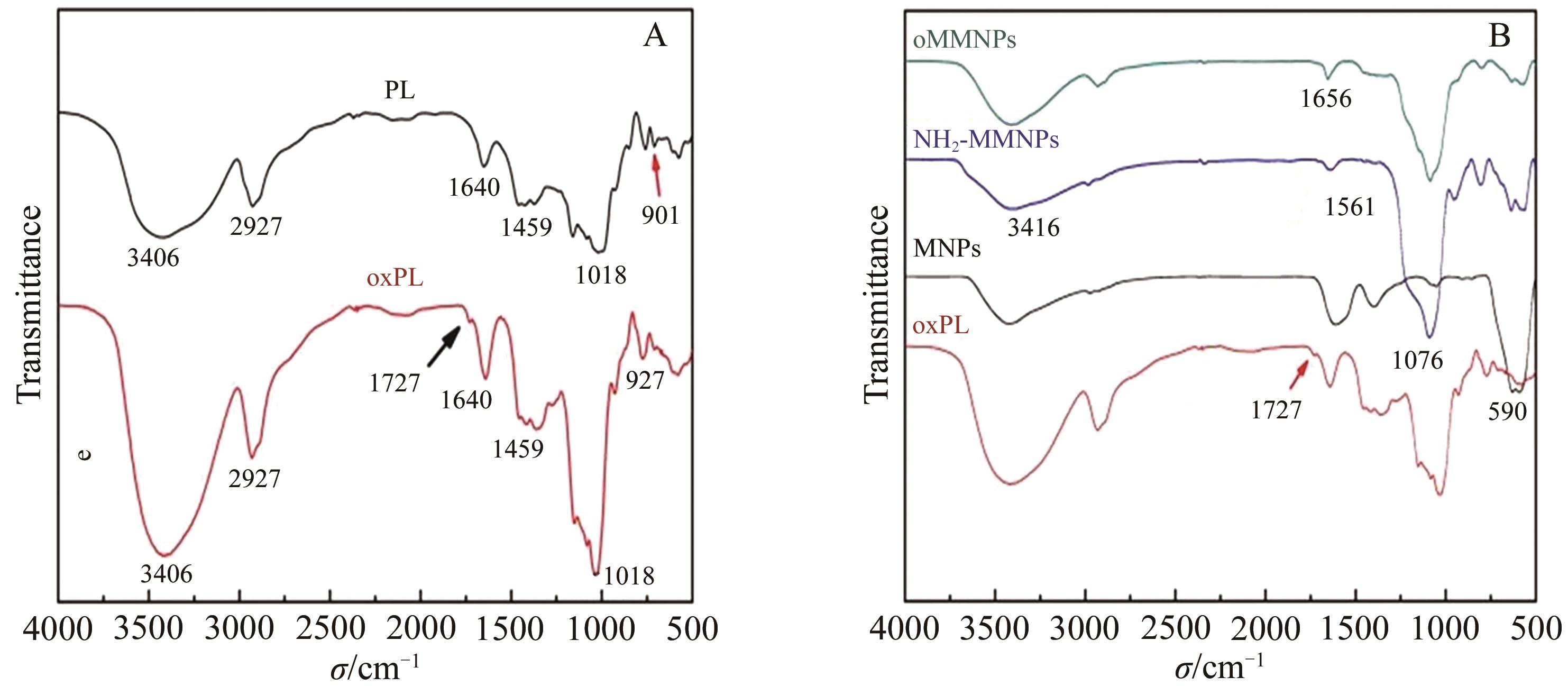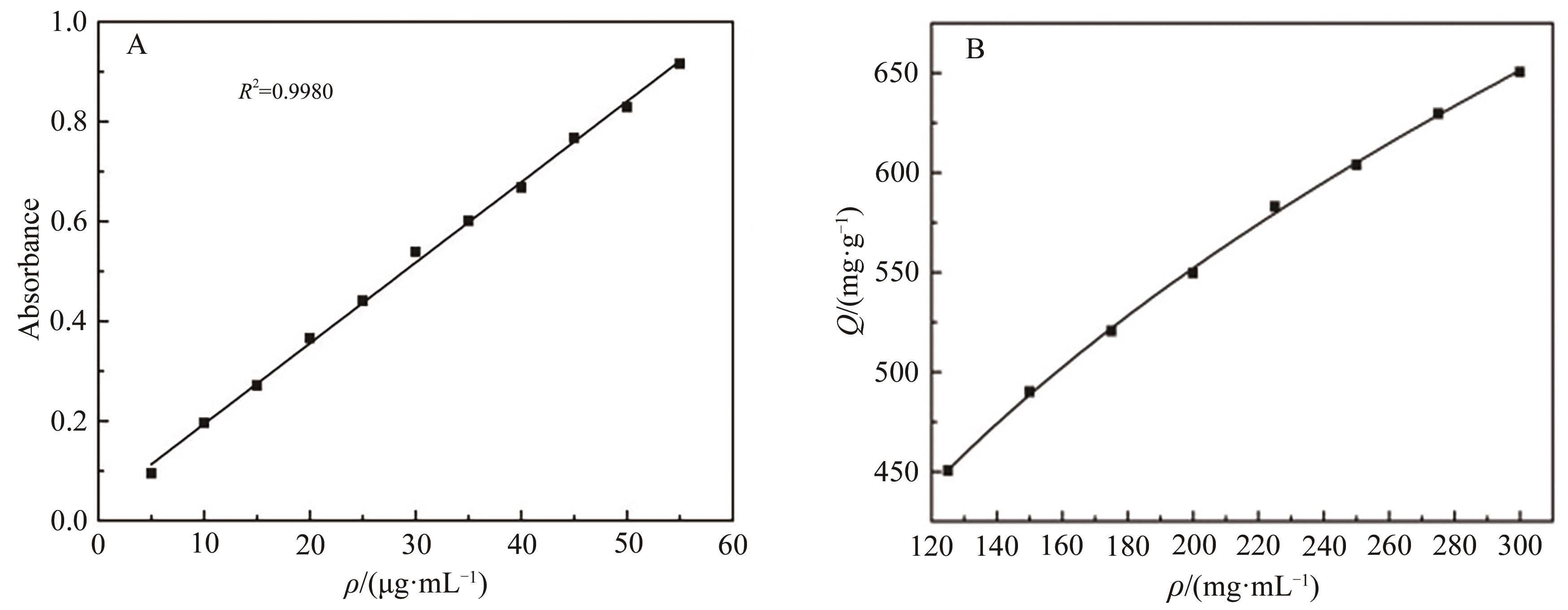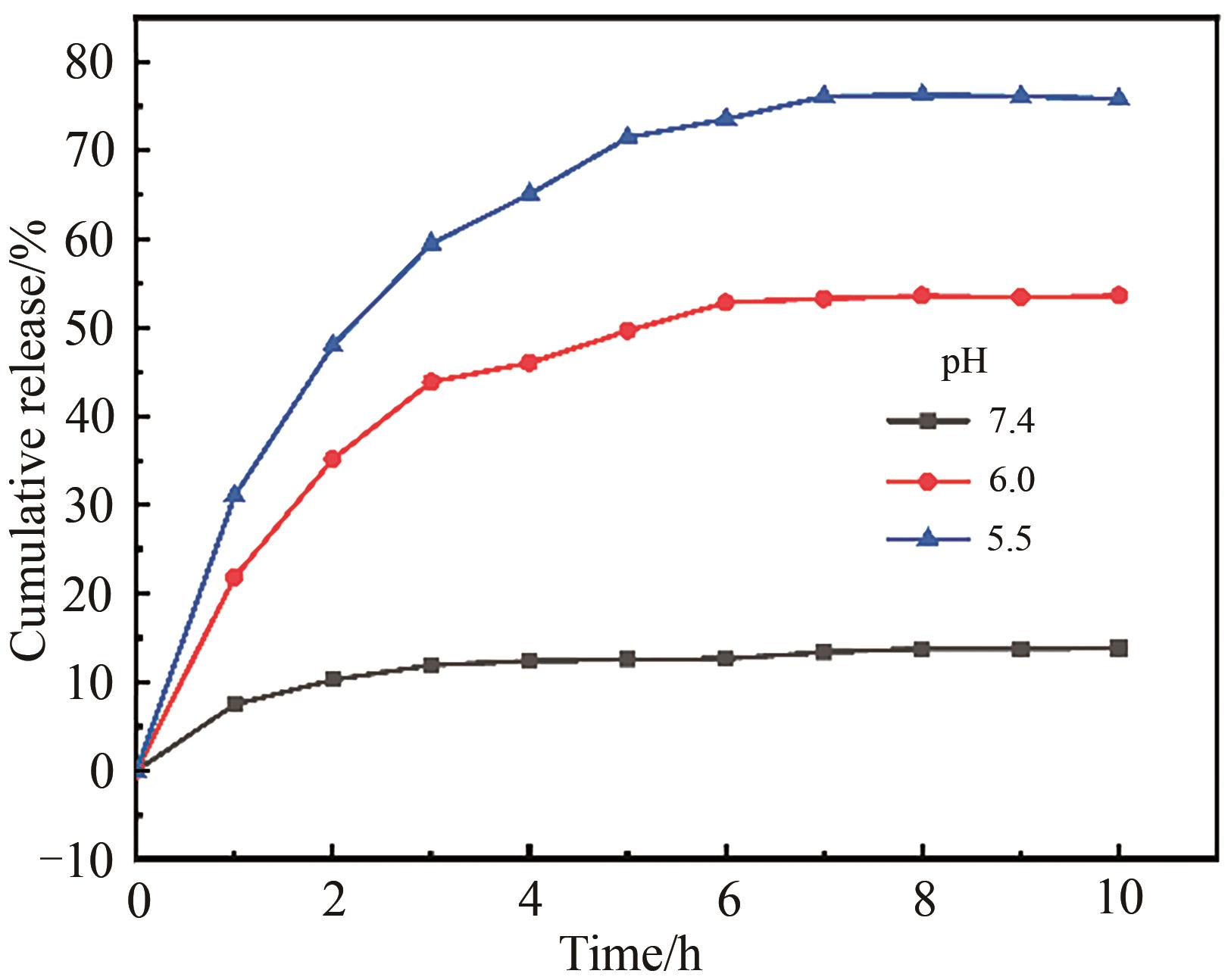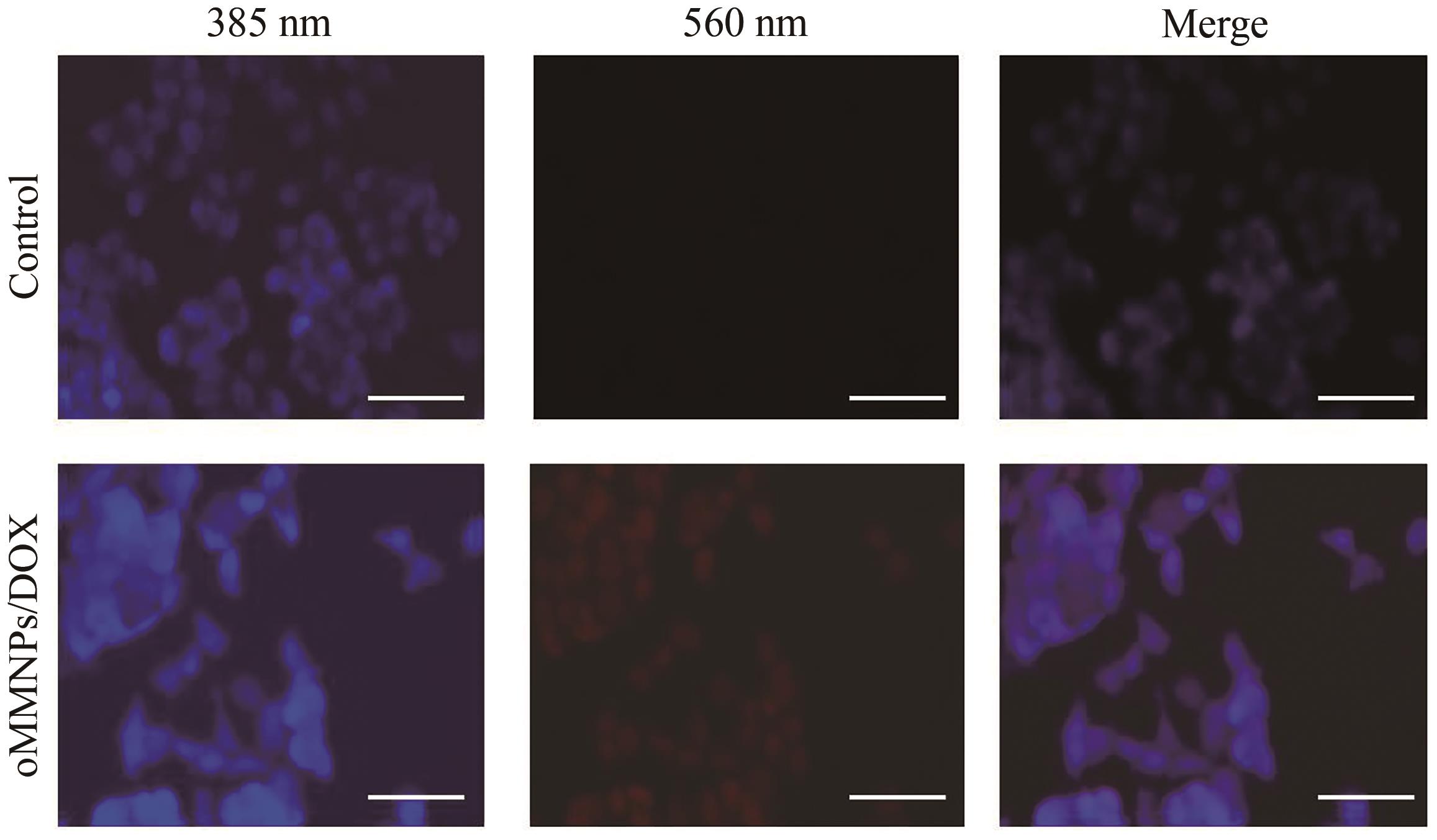
Chinese Journal of Applied Chemistry ›› 2024, Vol. 41 ›› Issue (6): 861-869.DOI: 10.19894/j.issn.1000-0518.230359
• Full Papers • Previous Articles Next Articles
Synthesis and Drug Loading Performance of pH-Responsive Magnetic Nanocomposites
Ling-Xiao WANG1,2, Shan GAO2, Wan-Yu WEI2, Ning-Bo LI2( ), Jie QIAO2(
), Jie QIAO2( ), Chuan DONG3
), Chuan DONG3
- 1.Department of Chemistry and Chemical,Taiyuan Institute of Technology,Taiyuan 030008,China
2.School of Basic Medical Sciences,Shanxi Medical University,Taiyuan 030001,China
3.Institute of Environmental Science,Shanxi University,Taiyuan 030006,China
-
Received:2023-11-14Accepted:2024-03-12Published:2024-06-01Online:2024-07-09 -
Contact:Ning-Bo LI,Jie QIAO -
About author:qiaojie@sxmu.edu.cn
ningboli@sxmu.edu.cn;
-
Supported by:the Youth Foundation of Taiyuan Institute of Technology(2020LG02);Shanxi Scholarship Council of China(2021-077);the Natural Science Foundation of Shanxi Province of China(202203021211240)
CLC Number:
Cite this article
Ling-Xiao WANG, Shan GAO, Wan-Yu WEI, Ning-Bo LI, Jie QIAO, Chuan DONG. Synthesis and Drug Loading Performance of pH-Responsive Magnetic Nanocomposites[J]. Chinese Journal of Applied Chemistry, 2024, 41(6): 861-869.
share this article
Add to citation manager EndNote|Ris|BibTeX
URL: http://yyhx.ciac.jl.cn/EN/10.19894/j.issn.1000-0518.230359
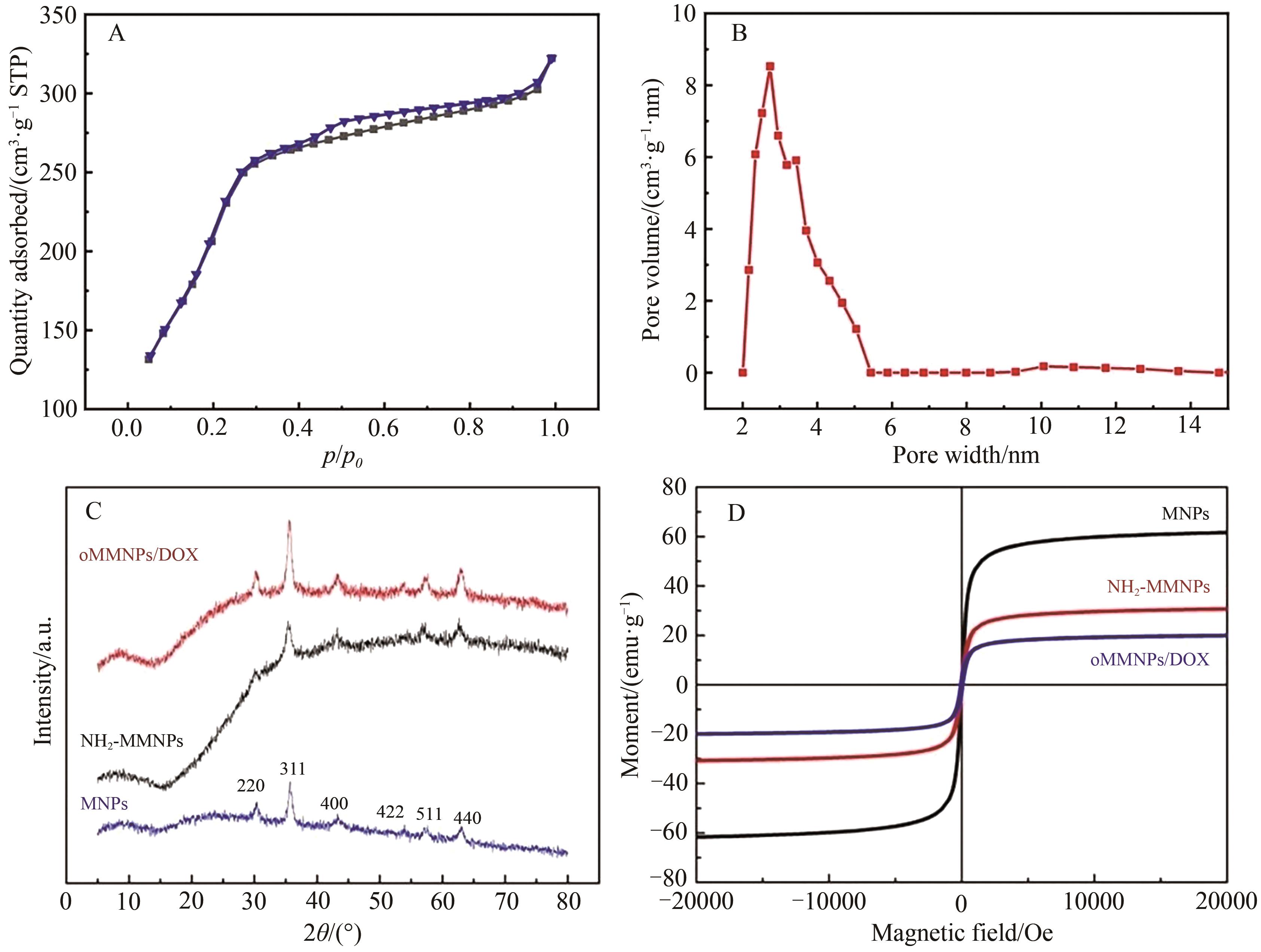
Fig.4 Nitrogen adsorption-desorption isotherm(A) and pore size distribution (B) curves of NH2-MMNPs; X-ray diffraction patterns (C) and magnetization curves (D) of MNPs, NH2-MMNPs and oMMNPs/DOX
| 1 | SUNG H, FERLAY J, SIEGEL R L, et al. Global cancer statistics 2020: GLOBOCAN estimates of incidence and mortality worldwide for 36 cancers in 185 countries[J]. CA Cancer J Clin, 2021, 71(3): 209-249. |
| 2 | TOHME S, SIMMONS R L, TSUNG A. Surgery for cancer: a trigger for metastases[J]. Cancer Res, 2017, 277: 1548-1552. |
| 3 | PRABAHAR K, ALANAZI Z, QUSHAWY M. Targeted drug delivery system: advantages, carriers and strategies[J]. Indian J Pharm Educ, 2021, 55(2): 346-353. |
| 4 | DARIVA C G, FIGUEIREDO J P H, FERREIRA C, et al. Development of red-light cleavable PEG-PLA nanoparticles as delivery systems for cancer therapy[J]. Colloid Surface B, 2020, 196: 111354. |
| 5 | CHEN M M, HU J X, BIAN C C, et al. pH-responsive and biodegradable ZnO-capped mesoporous silica composite nanoparticles for drug delivery[J]. Materials, 2020, 13(18): 3950. |
| 6 | WANG Y, HAN N, ZHAO Q F, et al. Redox-responsive mesoporous silica as carriers for controlled drug delivery: a comparative study based on silica and PEG gatekeepers[J]. Eur J Pharm Sci, 2015, 72: 12-20. |
| 7 | SONG S J, CHOI J S. Enzyme-responsive amphiphilic peptide nanoparticles for biocompatible and efficient drug delivery[J]. Pharmaceutics, 2022, 14(1): 143. |
| 8 | CHEN D Y, LIU X C, LU X Y, et al. Nanoparticle drug delivery systems for synergistic delivery of tumor therapy[J]. Front Pharmacol, 2023, 14: 1111991. |
| 9 | 弓韬, 文朝朝, 秦凯莉, 等. 甲酰基去氧胆酸修饰的Fe3O4纳米粒子的制备及其对土霉素负载的应用[J]. 应用化学, 2022, 39(12): 1920-1926. |
| GONG T, WEN C C, QIN K L, et al. Preparation of formyl deoxycholic acid modified Fe3O4 nanoparticles and their application for oxytetracycline loading[J]. Chin J Appl Chem, 2022, 39(12): 1920-1926. | |
| 10 | BULATAO B P, NALINRATANA N, JANTARATANA P, et al. Lutein-loaded chitosan/alginate-coated Fe3O4 nanoparticles as effective targeted carriers for breast cancer treatment[J]. Int J Biol Macromol, 2023, 1(242): 124673. |
| 11 | WANG T Y, LEI H L, LI X, et al. Magnetic targeting nanocarriers combined with focusing ultrasound for enhanced intracerebral hemorrhage therapy[J]. Small, 2023, 19(17): 2206982. |
| 12 | 杜慧, 姚晨阳, 彭皓, 等. 过渡金属掺杂磁性纳米粒子在生物医学领域中的研究进展[J]. 应用化学, 2022, 39(3): 391-406. |
| DU H, YAO C Y, PENG H, et al. Applications of transition metal⁃doped iron⁃based nanoparticles in biomedicine[J]. Chin J Appl Chem, 2022, 39(3): 391-406. | |
| 13 | QI G Q, WANG S C, YIN Q Q, et al. A pH-responsive nanoplatform based on magnetic mesoporous silica nanoparticles for enhanced treatment of pancreatic cancer[J]. ACS Appl Nano Mater, 2023, 6(24): 23184-23195. |
| 14 | ZHOU X, HE X, DONG Z Y, et al. Manganese-doped mesoporous magnetic nanocarriers for cancer treatment[J]. ACS Appl Nano Mater, 2024, 7(6): 6339-6350. |
| 15 | 刘慧慧, 史笑飞, 王倩男, 等. pH 响应性磁性介孔纳米载药系统的制备[J]. 化工进展, 2023, 42(10): 5390-5398. |
| LIU H H, SHI X F, WANG Q N, et al. Preparation of pH responsive magnetic mesoporous nanoparticle drug loading system[J]. Chem Ind Eng Pro, 2023, 42(10): 5390-5398. | |
| 16 | TENG Y, DU Y, SHI J, et al. Magnetic iron oxide nanoparticle-hollow mesoporous silica spheres: fabrication and potential application in drug delivery[J]. Curr Appl Phys, 2020, 20(2): 320-325. |
| 17 | RAYCHAUDHURI R, NAIK S, SHREYA A B, et al. Pullulan based stimuli responsive and sub cellular targeted nanoplatforms for biomedical application: synthesis, nanoformulations and toxicological perspective[J]. Int J Biol Macromol, 2020, 161: 1189-1205. |
| 18 | PATIL S B, INAMDAR S Z, DAS K K, et al. Tailor-made electrically-responsive poly(acrylamide)-graft-pullulan copolymer based transdermal drug delivery systems: synthesis, characterization, in-vitro and ex-vivo evaluation[J]. J Drug Deliv Sci Tec, 2020, 56: 101525. |
| 19 | SONI S J, GHOSH A. Exploring pullulan-poly(vinyl alcohol) interpenetrating network microspheres as controlled release drug delivery device[J]. Carbohyd Polym, 2017, 174(15): 812-822. |
| 20 | YANG Y N, WAN J J, NIU Y T, et al. Structure-dependent and glutathione-responsive biodegradable dendritic mesoporous organosilica nanoparticles for safe protein delivery[J]. Chem Mater, 2016, 28(24): 9008-9016. |
| 21 | 贾尚宁. 核壳式介孔硅Fe3O4 磁性纳米复合物的制备及载药性能[D]. 太原: 山西医科大学, 2019. |
| JIA S N. Preparation and drug loading properties of core-shell mesoporous silica Fe3O4 nanocomposites[D]. Taiyuan: Shanxi Medical University, 2019. |
| [1] | Yue ZHANG, Rui LIANG, Can-Nan ZHAO, Chun-Mei LI. Construction of Graphene Oxide-DNA Nanoprobe for Adenosine 5-Triphosphate Detection and Drug Delivery [J]. Chinese Journal of Applied Chemistry, 2024, 41(1): 118-127. |
| [2] | Xin-Tao XIE, Sang-Ni JIANG, Xi-Fei YU. Selective Binding pH Responsive Liposomes with Phenylboronic Acid for Drug Delivery [J]. Chinese Journal of Applied Chemistry, 2023, 40(6): 860-870. |
| [3] | Qin ZHANG, Wen-Bin LIU, Li-Jiao FAN, Yu-Ming XIE, Guo-Lin HUANG. Research Progress in the Preparation of Functionalized Mesoporous Silica and Its Application in Adsorption and Separation of Uranium from Water [J]. Chinese Journal of Applied Chemistry, 2023, 40(2): 169-187. |
| [4] | GUO Wei, WANG Yaming, JIANG Lihong, ZHENG Yan'e, LIU Biying. Preparation of Sulfonated Chiral Nematic Mesoporous Silicate Solid Acid and Its Catalytic Synthesis of Borneol [J]. Chinese Journal of Applied Chemistry, 2020, 37(12): 1447-1456. |
| [5] | GONG Tao, HUANG Yu, GUO Guoying, SU Dan, LIANG Wenting, DONG Chuan. Linear Maltodextrin Polymer Functionalized Fe3O4 Magnetic Nanoparticles as Drug Carriers [J]. Chinese Journal of Applied Chemistry, 2019, 36(2): 161-169. |
| [6] | CHEN Hongyun,YANG Fanghong,LI Yupeng,HE Jiayu,CHE Mengqin,WANG Meichen,CHENG Chuanjie. Synthesis and Application of Water-Soluble Fe3O4 Magnetic Nano-catalyst [J]. Chinese Journal of Applied Chemistry, 2019, 36(2): 188-194. |
| [7] | LI Lin, SONG Jixiang, LI Yingqi, ZHANG Caifeng. Preparation of Lysozyme-Responsive Nanodiamond Drug-Loading System and the Effect on HepG2 Cells [J]. Chinese Journal of Applied Chemistry, 2019, 36(10): 1109-1117. |
| [8] | YU Chang,SHAO Shuai,LI Hejie,LIU Guofeng,DING Binbin,MA Ping'an,LIN Jun. Upconversion Nanoparticles Decorated with Hybridization Chain Reaction DNA for Near-infrared Light Controlled Release Doxorubicin [J]. Chinese Journal of Applied Chemistry, 2018, 35(12): 1485-1491. |
| [9] | YU Chang, SHAO Shuai, LI Hejie, LIU Guofeng, DING Binbin, MA Ping'an, LIN Jun. Upconversion Nanoparticles Decorated with Hybridization Chain Reaction DNA for Near-infrared Light Controlled Release Doxorubicin [J]. Chinese Journal of Applied Chemistry, 2018, 35(12): 0-0. |
| [10] | DING Hao, YAN Fei, ZHENG Wenjing, GUO Weiliang, SU Bin. Electrochemical Detection of Antioxidants in Cosmetic Samples Using Mesoporous Silica Film and Confined Micelles [J]. Chinese Journal of Applied Chemistry, 2017, 34(11): 1307-1313. |
| [11] | DING Hao, YAN Fei, ZHENG Wenjing, GUO Weiliang, SU Bin. Electrochemical Detection of Antioxidants in Cosmetic Samples Using Mesoporous Silica Film and Confined Micelles [J]. Chinese Journal of Applied Chemistry, 2017, 34(11): 0-0. |
| [12] | FENG Cuilan, LIU Jianping, GUI Jianzhou, LIU Lantao. Application of Magnetic Nanoparticles Supported Pd Catalysts in C—C Bond Formation Reactions [J]. Chinese Journal of Applied Chemistry, 2015, 32(1): 19-26. |
| [13] | LI Zheng1, ZHU Haie1, ZHOUYingjie1, YAN Kai1, YI Changfeng1,2, XU Zushun2*. Preparation and Characterization of Rare Earth Europium Containing Bifunctional Fluorescent Magnetic Nanoparticles [J]. Chinese Journal of Applied Chemistry, 2014, 31(07): 828-834. |
| [14] | GUO Danli, ZHANG Hua, HU Qiuyun, CAI Sanyan, CHEN Ziyun, WENG Wen*. Preparation and Evaluation of Several Cellulose Ester-Coated Chiral Stationary Phases with Different Supports [J]. Chinese Journal of Applied Chemistry, 2013, 30(10): 1231-1236. |
| [15] | ZHANG Lianming, LI Jianping*, WEI Ge. Synthesis of Magnetic Nickelous Hexacyanoferrate Hanoparticles and Preparation of Modified Electrodes [J]. Chinese Journal of Applied Chemistry, 2012, 29(10): 1199-1205. |
| Viewed | ||||||
|
Full text |
|
|||||
|
Abstract |
|
|||||
